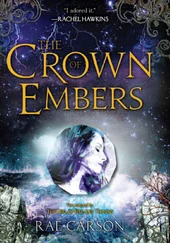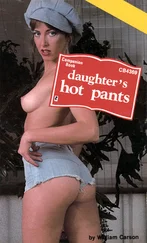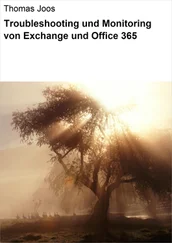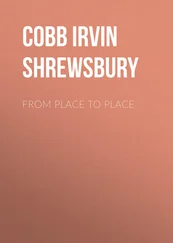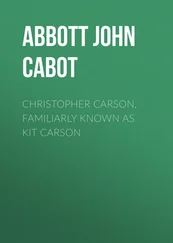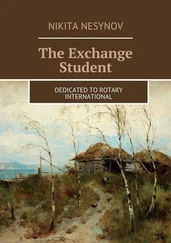At any rate, when Bourne asked me to write a piece for the catalogue of a show he was putting together, I was flattered, said Kilpatrick. I spent long hours watching him paint, his eyes darting from subject to canvas and back again in a fugue of rhythmic glances, his eyes at times so narrowed as to appear shut, eyelids flickering as if in REM sleep. I see him now in his painting clothes, floppy-collared indigo denim workman’s jacket, yellowed white flannel trousers, white boots, all spattered and smeared with a myriad of colours. When I remarked on the white trousers and boots, Bourne replied that he had once played a bit of cricket; they were relics of his varsity days. And I remembered that in the summer months he would often have the radio in the studio tuned to the cricket, one of those big old Echo, or was it EKO valve radios, ee-kay-oh that is, all hiss and static, Bourne would keep fiddling with the knob, but I gather that the bad reception had more to do with relative wavelengths than with any fault in the receiver. According to Bourne, light was the fastest wavelength in the spectrum, and given ideal cricketing weather, long bright sunlit days, it would interfere with the slower radio waves. And indeed, as the light began to fade, so reception would improve. The improved reception seemed to clarify one’s inner vision of the match, and as I heard the commentators speak of what was happening, I could see the white-clad figures poised in their fielding positions on the greensward and the sun setting behind a bank of mauve and russet cloud; hearing the pock of bat on ball, I saw the batsmen flickering between the wickets. In lulls of play there would be discussion of the weather conditions, or the state of the pitch, where it might be breaking up as the fast bowlers further wore down an already worn patch for the spin bowlers to take advantage of. I knew little about cricket, said Kilpatrick, and Bourne’s talk was an education for me. Cricket was a game of many dimensions including chance and skill. Temperature, wind, the ambient humidity of the air, all affected the flight of the ball. No one, neither bowler nor batsman, could predict how a ball might spin off a breaking wicket as it landed on a bump, hollow or fissure in the earth. It was the bowler’s job to enlarge the parameters of unpredictability, to keep the batsman guessing. And again Bourne would quote Bacon, The hinges of form come about by chance.
So when I came to write the catalogue essay, said Kilpatrick, I used some cricketing analogies. Bourne had talked about cricketers of the past and how he used to try to emulate them. When he was a boy he read of how the great Don Bradman would, when he was himself a boy, repeatedly hit a golf ball with a cricket stump against the curved brick base of the family water tank, trying to anticipate the unpredictable angle as it bounced back, the boy Bourne copying the boy Bradman, except in Bourne’s case it was an ancient garden wall covered in mosses and lichens. He dreamed of being Bradman, as if he remembered being him in another life, on the other side of the world. In sport as in art one learns by imitation; one can only be oneself by first trying to mirror another. Bourne was indebted to Bacon; through that emulation he had become someone he would never otherwise have been.
Most interesting, said Gordon. I am reminded of the Meno of Socrates, where Socrates says to Meno that all enquiry and all learning is recollection. You already know what seems unknown; you have been here before, but only when you were someone else.
The accordion music of the Maigret theme faded. I could feel the Black Rose wearing off and decided to roll another. I keep my stash in a vintage Peek Frean biscuit tin with a bas-relief of a coral reef stamped into its lid, exotic multicoloured fish, sea anemones and urchins, the tin secreted in one of the drawers of the miniature burr walnut chest where I also keep my notebooks; and on top of the chest is a Bose Wave Radio/cD player which I bought some years ago, inveigled by the language of its advertising, reproduced in the accompanying manual, from which I quote: ‘Extensive research in the fields of speaker design and psychoacoustics — the human perception of sound — led to the groundbreaking 901®Direct/Reflecting® speaker system in 1968. Acoustimass® speaker technology reshaped conventional thinking about the relationship between speaker size and sound, enabling palm-sized speakers to produce audio quality previously thought impossible from speakers so small.’ And I thought of music resonating from the big wire grille of John Harland’s EKO radio or from the suitcase-sized Dansette record player. I couldn’t remember when I had last listened to the Bose. I switched it on, and recognized the sound immediately. It was Glenn Gould playing Contrapunctus XIV . I couldn’t remember when I had last been playing it, but the display showed it had been some five minutes into the twelve minutes eighteen seconds of the track when I cut it abruptly short, well before the track itself comes to the staccato stop of its predestined, unfinished ending, followed by a silence like a gunshot. And I recalled how Bach’s autograph of the music bore a note in his son Carl Philippe Emmanuel’s hand saying, ‘At the point where the composer introduces the name BACH (the notes, that is; in English notation, B flat-A-C-B sharp) in the countersubject to this fugue, the composer died’ — a claim disputed by modern scholars, some of whom suggest that Bach finished the piece on another sheet of paper, referred to in the literature as ‘fragment X’. But if fragment X ever existed, it has been lost.
When I had rolled the joint I lit it, turned the Bose back to the beginning of the track, and sat down to listen. How often had I listened to this playing of Contrapunctus XIV , ever since I first heard it in John Harland’s studio all these years ago? I have no way of knowing. Many times in the studio itself, no doubt, and again I pictured Harland painting to that music, and tried to remember what might have then gone through my mind, or what had subsequently transpired that day, or on another. I had listened to Contrapunctus XIV many times on the car radio, sometimes immersed in it while I drove on automatic pilot to a destination I had been to many times, sometimes not fully listening as I drove an unfamiliar route; or I would find myself in a reverie prompted by the music, perhaps a fragment of a memory of being elsewhere on a previous listening, a landscape I had forgotten driving through until once more I heard the music I had been listening to then, a dark, nameless avenue without end. By now, after so many listenings, albeit mostly forgotten by my conscious mind, I have a fair enough outline of the piece, and can anticipate to some extent what comes next, and vocalize along with it, somewhat as Gould did himself; and as I do, I think how feeble my memory of the piece must be, compared to that of Glenn Gould, who could sight-read anything — whole orchestral pieces — and memorize on sight. He could read music before he read words, and had only to hear a piece or glance at the page of a score to retain it indefinitely, and I wondered if he could do the same with books.
Certainly, I could not; and, glancing around the shelves of the book-lined room in which I write, I wonder how many of these hundreds of volumes I could trace in my memory to their point of sale. Lately I have bought many books on the internet, but my library has come mostly from physical shops, many or perhaps most of them now vanished. And as I glance again, a ray of sunlight falls upon a stack of shelves, illuminating the many-hued spines of dictionaries, art books, novels, books of science and philosophy, books about books. My memory draws a blank with most of them. But here I see a row of vintage Baedekers in shades of faded red, and I remember, in an alleyway off Charing Cross Road in London, a second-hand bookshop specializing in travel books. On the shelf above is a Robinson Crusoe in an eighteenth century binding which I found in the Excelsior Bookshop in Smithfield, and I remember standing in the smouldering ruins of Smithfield after it had been firebombed how many years ago I cannot tell, remarking how difficult it was to burn books, for between the charred covers they still retained their inner core of text. And sandwiched between Jean Cocteau’s Diary of an Unknown and Paul Valéry’s Idée Fixe is the three-volume Everyman edition of Montaigne’s Essays , translated by John Florio, given to me by John Harland for my fiftieth birthday, or the day after it rather, for he had mistaken the date. From one John to another — Harland to Kilfeather, he had written on the flyleaf.
Читать дальше


